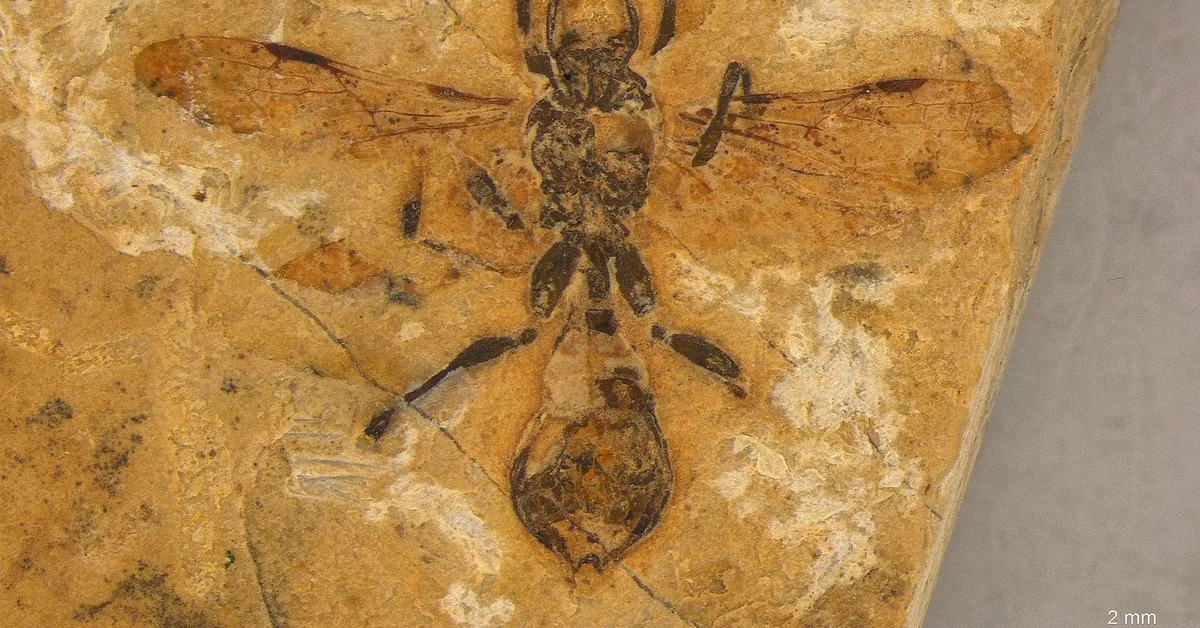
On April 25, 2023, it was reported that scientists have made a groundbreaking discovery in the field of paleontology with the identification of the fossilized remains of the oldest-known ant. This remarkable winged insect, known as Vulcanidris cratensis, lived approximately 113 million years ago during the Cretaceous Period—an era dominated by dinosaurs. The well-preserved fossil was found in limestone in northeastern Brazil, specifically in the Crato geological formation.
The newly discovered species, Vulcanidris cratensis, is classified within a lineage of ants known as hell ants, which are recognized for their striking, scythe-like jaws. These unique anatomical features allowed them to thrive across a wide geographical range during the Cretaceous. Interestingly, hell ants have no living descendants today, highlighting their evolutionary significance. A related species, Haidomyrmex, was previously named in honor of Hades, the Greek god of the underworld, further emphasizing the fearsome nature of these insects.
The Vulcanidris cratensis is a medium-sized ant, measuring about half an inch (1.35 cm) in length. It possessed highly specialized jaws designed for pinning down or impaling prey, akin to some of the predatory behaviors seen in modern ants. Unlike contemporary ants, which have mandibles that move side to side, Vulcanidris had mandibles that operated vertically—a significant evolutionary trait. The insect also featured wings, suggesting it was a proficient flier, and possessed a well-developed stinger, similar to that of wasps.
The fossilized remains of Vulcanidris cratensis were excavated decades ago, likely in the 1980s or 1990s, and spent years in a private collection before being donated to the São Paulo museum about five years ago. Notably, the fossil was initially discovered while researchers were examining wasp specimens, revealing its close relation to a previously described hell ant from Burmese amber.
This significant find indicates that ants, including the Vulcanidris lineage, emerged millions of years earlier than previously thought. Molecular estimates suggest that ants originated between 168 million and 120 million years ago, with Vulcanidris supporting an earlier emergence within this timeframe. Analysis of its anatomy further suggests that ants evolved from a wasp-like ancestor, reinforcing the evolutionary link between ants, wasps, and bees.
During its existence, Vulcanidris cratensis inhabited a vibrant ecosystem rich with diverse life forms, including insects, spiders, millipedes, centipedes, crustaceans, turtles, crocodilians, flying reptiles known as pterosaurs, birds, and even dinosaurs like the feathered predator Ubirajara. Its potential predators may have included frogs, birds, and larger insects, indicating a complex food web.
Today, ants are one of the most populous and diverse groups of organisms, with an estimated global population of around 20 quadrillion. This staggering number dwarfs the human population of approximately 8 billion. Ants play a vital role in various ecosystems, engaging in predation and herbivory, and managing populations of other organisms. Furthermore, ants form symbiotic relationships with certain plants and insects, offering protection and contributing to soil health as decomposers by feeding on dead organic matter.
In conclusion, the discovery of Vulcanidris cratensis not only provides insight into the evolutionary history of ants but also underscores their ecological significance. As research in paleontology continues, findings like these illuminate the complex web of life that existed during the age of dinosaurs and the evolutionary journey of one of the most successful groups of insects on Earth.